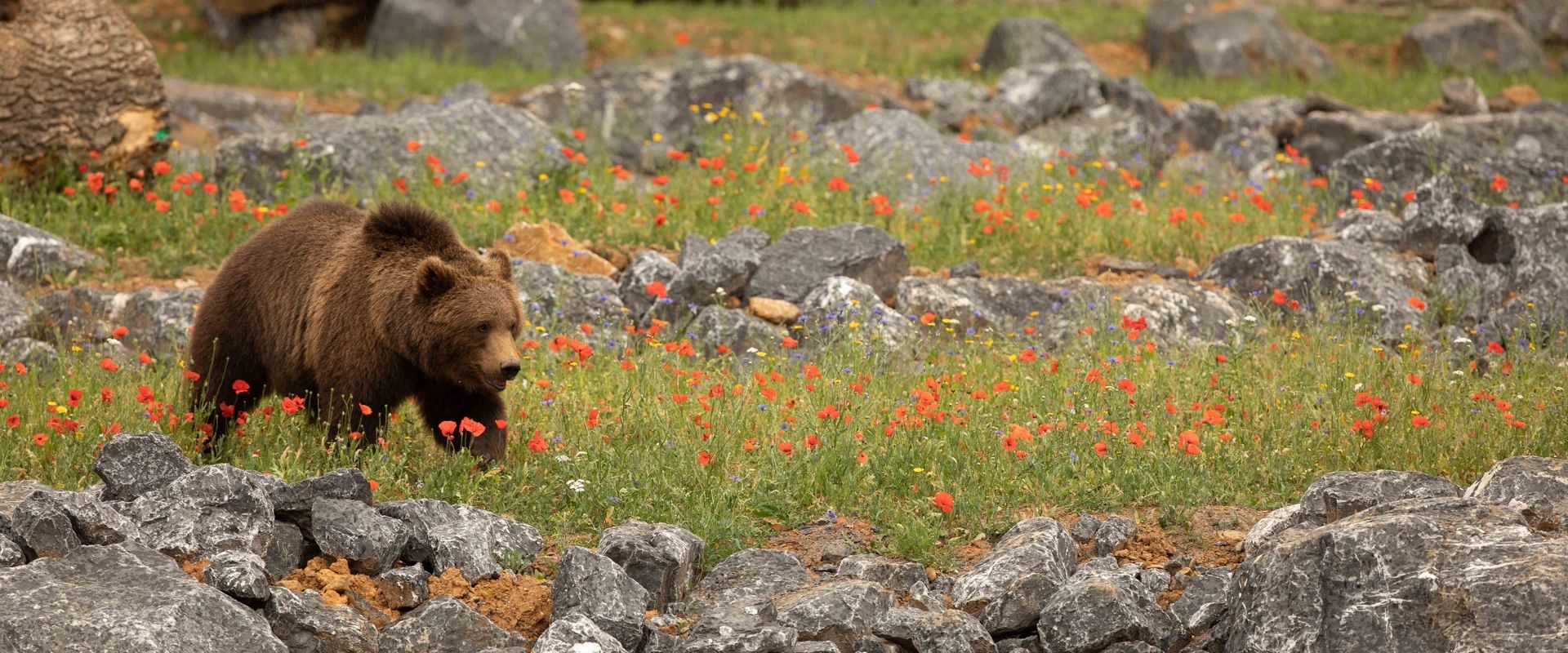Let’s discover Bear Hill!
24 June 2019
Once upon a time there were two brown bears from Switzerland, from the Zurich Langenberg Park. It was the month of June 1971 and Doris and Daniel were the first brown bears to set foot in the Han-sur-Lesse Widlife Park.

It had all started a year earlier when the Company of the Caves of Han had created a Nature Reserve to preserve the unspoilt natural environment of the massif that houses the Caves of Han. This is how the Wildlife Park was first opened to the public on 13 July 1970. At the time, the Park management harboured a dream… to be able the welcome a couple of brown bears! Their dream came true when Doris and Daniel arrived in the Park.
Years later, Etienne Brunelle, Head Keeper at our Wildlife Park, travelled through the majestic pine-clad forests of the Great North, and fell in love with its striking sceneries. There and then, he set his heart on recreating those stunning landscapes right here in our Wildlife Park, and to see brown bears roaming an environment specifically tailored to their needs. In the early winter of 2019, the Herculean task of materialising this project in order to welcome brown bears began. It is called “Bear Hill” and stretches out over nearly 5 acres of rocky areas, with countless nooks and crannies overflowing with the bears’ favourite edible plants, a pool to horse around in as well as pine forests...
Two brand-new, fully equipped buildings
Located above Bear Hill, we built an area which not only serves as the bears’ sleeping quarters for the night, but also as a veterinary room, a quarantine area and as technical facilities for the bison. This project is the result of many months of intense reflection, as we were pursuing a twofold goal: create a new area for the bears, but also modernize the buildings used for the bison. It was of vital importance for us to improve their infrastructures so we can keep striving for their welfare as efficiently as possible, as the species is the subject of numerous reintroduction and preservation programs.
Bear Hill facts and figures:
- A surface area of approximately 20.000 m²;
- Almost 5.000 m³ of earth was moved in the process;
- 400 m² of wetland;
- 1.500 tons of limestone rocks transported to the site;
- Over a 500 shrubs and 100 trees planted;
- A fence that is over 4.800 m long.
As for safety, nothing was left to chance:
- A 3,5 m deep ditch;
- Exterior fences that are 3 m high with cranked toppings and are buried 80 cm underground;
- Electrified inside fences and electrified grass placed at strategic locations (to prevent the bears from getting too close to the ditch or the trees).
Our 3 young bears have finally arrived!
The 3 male bears are a year and a half old. Their weight varies between 66 kg and 120 kg. This is quite impressive, even more so because the cubs only weigh 500 gr at birth. It takes the mother bear a year and a half to wean them, and then it is time for them to fly the nest.
Two of the bears are from the Copenhagen Zoo (Denmark) while the third bear comes from the Boras Djurpark in Sweden. It’s the Dutch firm EKIPA (which specialises in animal transport) that took care of their transfer to Han-sur-Lesse, in a temperature-controlled lorry. The 3 bears are part of a European Studbook (ESB); basically a species’ family tree. The Studbook keeper collects all the data pertaining to the species he is in charge of (births, deaths, transfers, etc.) from all the European Wildlife Parks. After spending 2 weeks in quarantine, they finally got to discover “Bear Hill”, their tailor-made living area. Our three bears Björn, Olof and Jojo are enjoying life in Han-sur-Lesse and our visitors are endeared and amused by the three bears’ playful frolicking.
Although the European brown bear is not a threatened species, it is nevertheless a protected one. There are currently about 17.000 brown bears in Europe. The cohabitation between man and bear is not always easy: often they tend to occupy the same territories and the activities of one species tend to encroach upon those of the other. Fortunately, there are many examples of successful cohabitation!
Bears can be found in the Pyreneans, in the Italian provinces of Abruzzo and Trentino, in the Dinaric Alps, in Slovenia as well as in the Carpathians (which stretch across Roumania, Slovenia, Poland and the Ukraine). The Carpathian Mountain range houses half of the European brown bear population.
In September 2019, the sleuth of bears (yes, this really is the official name for a group of bears) welcomed a new arrival, Mufko, an orphaned bear saved in the nick of time by a bear sanctuary in Slovakia.